John had been a business owner for years, and he prided himself on his ability to make intelligent decisions. He was always the first to jump on new opportunities and was confident in his ability to create a successful business.
But one thing John struggled with was finding his brand’s voice. He wasn’t sure how to connect with customers on a deeper level, and he felt like his brand was getting lost in the shuffle.

John knew he needed to find his brand’s voice to create lasting relationships with customers. But he didn’t know where to start. He tried a few different approaches, but nothing seemed to stick. He was about to give up when he came across an article that changed everything.
The article was about how to find your brand’s voice. It discussed the importance of connecting with customers deeper and creating lasting relationships. It also gave some tips on how to find a voice that is true to your brand.
John finally found his brand’s voice by following the tips in the article. He was able to connect with customers on a deeper level, and he was able to create lasting relationships. His business flourished as a result, and he was finally able to find the success he had always wanted.
Don’t give up if you struggle to find your brand’s voice. Follow these tips, and you’ll be well on your way to finding a voice that is true to your brand and resonates with your customers.
Know your customers:
Knowing your customers is the first step to finding your brand’s voice. What are their needs? What are their pain points? What do they want from your brand? By understanding your customers, you’ll be able to create a voice that resonates with them.
Let’s dig in a little deeper:
What are their needs?
Whether you realize it or not, your brand meets a need of your customers. And if you can tap into that need, you’ll be able to create a voice that resonates with them.
For example, let’s say you sell skincare products. Your customers need your products because they want to feel confident and beautiful. When you know this, you can create a brand voice that speaks to those needs.
It might be a physical need, like food or clothing. Or it might be an emotional need, like feeling happy or loved.
Either way, understanding your customers’ needs is the first step to finding your brand’s voice.
What are their pain points?
In addition to needs, your customers also have pain points. These things make their lives difficult, and they’re looking to your brand for a solution.

For example, let’s say you sell products that help people with chronic pain. Your customers’ pain point is, obviously, the pain itself. But it might also include difficulty sleeping, anxiety, and depression.
When you know your customer’s pain points, you can create a brand voice that addresses them.
What do they want from your brand?
Finally, you need to understand what your customers want from your brand. This goes beyond meeting their needs – it’s about creating an emotional connection with them.
For example, let’s say you sell baby products. Your customers might need your products because they have a baby, but they also want to feel like they’re doing an excellent job as a parent. They want to feel confident, competent, and capable.
When you know what your customers want from your brand, you can create a voice that speaks to those needs.
Know your brand:
The second step to finding your brand’s voice is to know your brand. This may seem like a no-brainer, but it’s often one of the most overlooked steps. To create a voice that resonates with your customers, you need to clearly understand who your brand is.
What are your core values? What is your mission statement? What makes you different from your competitors? When you clearly understand your brand, you’ll be able to create a voice that is true to who you are.
Again, let’s dig a little deeper:
What are your core values?
Your core values are the foundation of your brand. They guide everything you do, from the products you sell to how you treat your customers. When you know your core values, you can infuse them into your brand’s voice.
For example, let’s say one of your core values is customer service. You can ensure that your brand’s voice always puts the customer first, whether you’re addressing their needs or pain points.
Here are some core values of some brands that you’re likely familiar with for inspiration:

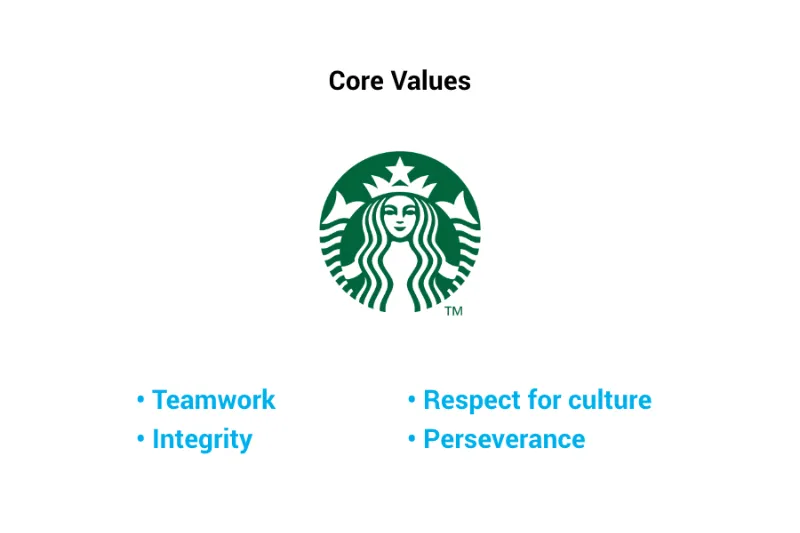
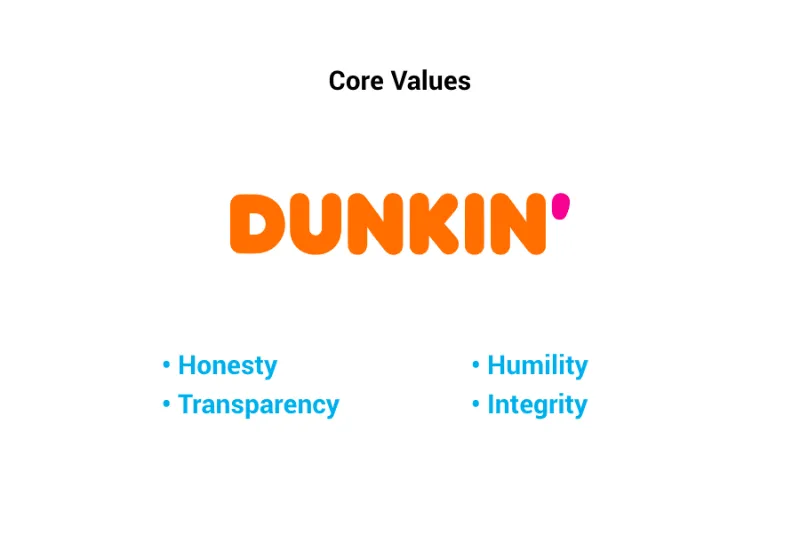
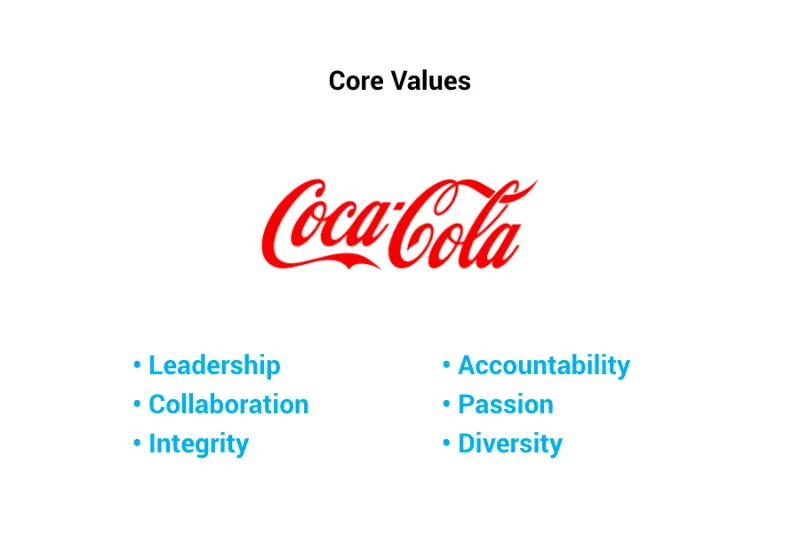
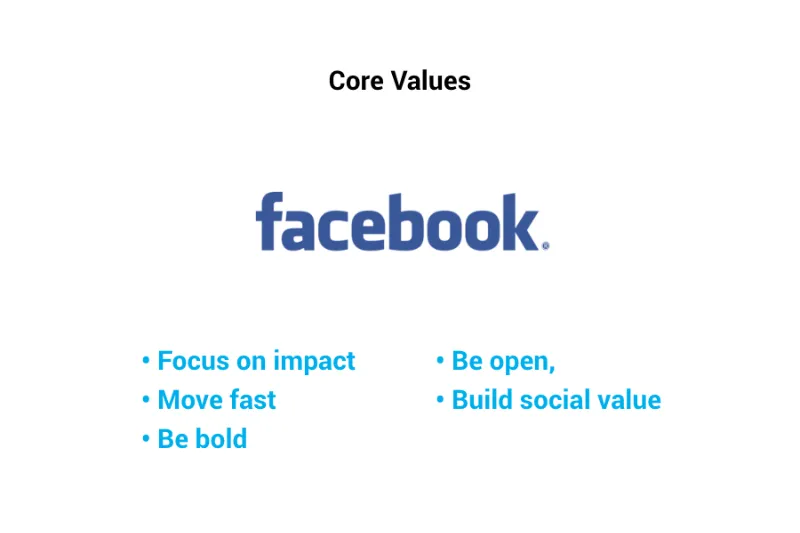
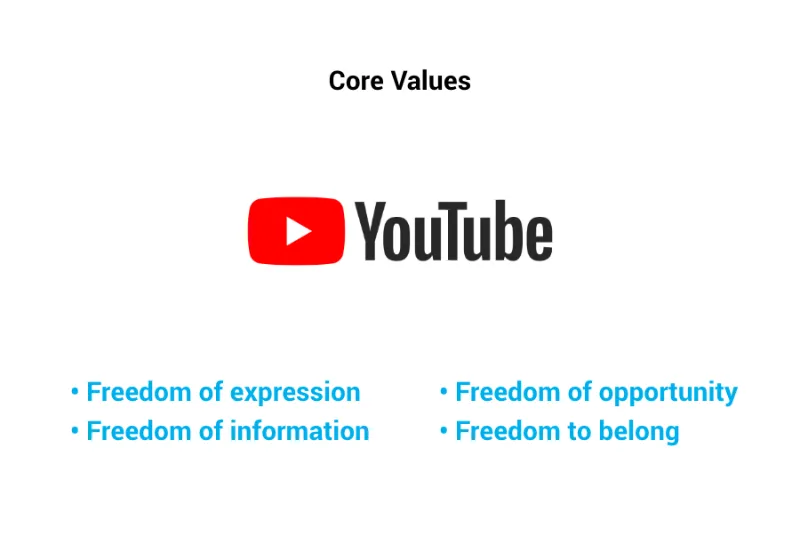
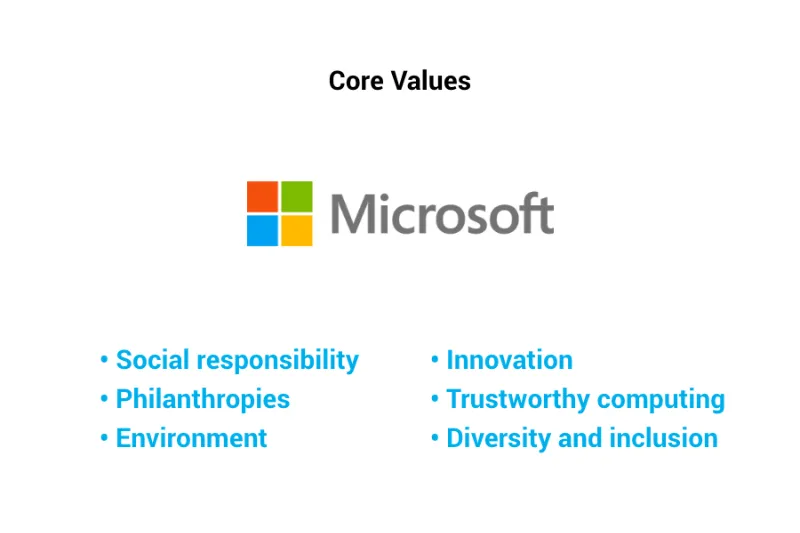
What is your mission statement?
Your mission statement is a summary of what your brand is all about. It should be clear, concise, and easy to understand. When you know your mission statement, you can ensure that your brand’s voice is aligned.
For example, let’s say your mission statement is to help people live healthier lives. You can ensure that your brand’s voice promotes healthy living and speaks to the benefits of your products.
What makes you different from your competitors?
Finally, you need to know what makes your brand different from your competitors.
This is what sets you apart and makes you unique. When you know what makes your brand different, you can ensure that your voice reflects that.
For example, let’s say you sell organic food. You can make sure that your brand’s voice speaks to the benefits of eating organic and promotes a healthy lifestyle.
Define your tone:
Now that you know your customers and your brand, it’s time to define your tone. This is the overall attitude of your brand’s voice. It should be consistent across your communications, from social media to website copy.
When defining your tone, there are a few things to keep in mind:
What feelings do you want your customers to have when interacting with your brand?
For example, do you want them to feel happy? Excited? Motivated?
What kind of relationship do you want to have with your customers?
For example, do you want to be friends? Mentors? Partners?
What kind of language do you want to use?
For example, do you want to use industry jargon or common terms?
Once you’ve answered these questions, you’ll better understand the tone you want to set with your brand’s voice.
Find your writing style:
Now it’s time to find your writing style. This is how you write and should be consistent across your brand’s communications. When finding your writing style, there are a few things to keep in mind:
Write in a style that is consistent across all communications.
Consistency is key when finding your brand’s voice. You want customers to recognize your voice no matter where they see it – whether on your website, in an email, or on social media.
To learn more about the importance of consistency for your brand, read our recent article, “4 Ways to Make Your Brand Memorable.”
Use proper spelling and grammar.
Unless you want to come across as unprofessional, it’s essential to use proper spelling and grammar in all of your communications. This includes everything from emails to social media posts.
It only takes a second to run your content through a tool like Grammarly to ensure it’s error-free.
Or kick it old-school and proofread it yourself!
Be creative and exciting.
The internet is full of content, so it’s essential to make sure that yours stands out. Be creative with your words and engaging in your topics to capture attention.
But don’t forget to be true to your brand. You want customers to recognize your voice, so don’t stray too far from what makes you unique.
Connect with customers on a deeper level
Emotions sell, so it’s essential to connect with customers on a deeper level. Use your words to evoke feelings and create lasting relationships.
Don’t be afraid to leverage emotions in your content – after all, that makes people connect with brands on a deeper level.
Use power words to evoke emotion.
When writing your content, use powerful words that evoke emotion. For example, instead of saying “our product is good,” you could say “our product is the best.”
Or, instead of saying, “this will help you,” you could say, “this will transform your life.”
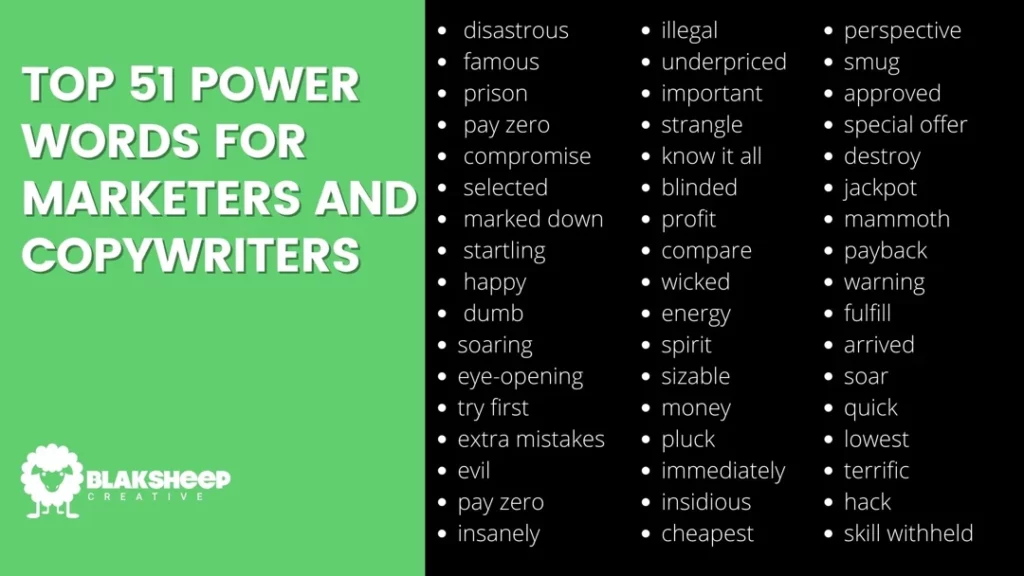
The right words can make all the difference in how your content is received, so choose them wisely!
Here are some other power words to get you started:
- revolutionary
- life-changing
- essential
- innovative
- leading
- superior
- advanced
- premium
- unique
If you want to learn more power words, check out this article by businesscommunity.com.
Now, let’s put it all together.
Put it all together:
Now that you know all of the elements of your brand’s voice, it’s time to put it all together. This is where you’ll take all the different pieces and create a cohesive whole.
When putting your brand’s voice together, there are a few things to keep in mind:
Be consistent
Ensure your brand’s voice is consistent across all your communications.
This includes social media, website copy, email marketing, and more. Consistency will help create a cohesive brand image and build trust with your customers.
Be true to yourself.
Make sure your brand’s voice is true to who you are as a company. Don’t try to be someone you’re not. Customers will see through it, and it will damage your credibility.
Be flexible
Make sure that your brand’s voice is flexible. As your business grows and changes, so too will your brand’s voice. Be prepared to change and adapt as needed.
Be clear
Make sure that your brand’s voice is clear and easy to understand. Avoid using industry jargon or complex language unless it’s necessary.
By keeping these tips in mind, you’ll be well on your way to creating a brand voice that is true to your company and resonates with your customers.
Be true to yourself.
Finally, it’s important to be true to yourself. As a business, you want to build trust with your customers, and the best way to do that is by being genuine. Don’t try to be someone you’re not – it will only damage your credibility. Be truthful in your communications and stay true to your brand’s core values.
The bottom line:
Creating a brand voice is an essential step in building a successful business. It will help you connect with customers deeper and create lasting relationships.
There are many different elements to consider when creating your brand’s voice, but by keeping these tips in mind, you’ll be well on your way to finding a voice that is true to your brand and resonates with your customers. Thanks for reading!
If you’re looking to create a brand voice that is consistent, authentic, and resonates with customers, look no further than BlakSheep Creative.
We are Louisiana’s leading digital marketing agency, and we can help you create a voice that is true to your brand and connects with customers on a deeper level. Contact us today to learn more!














































